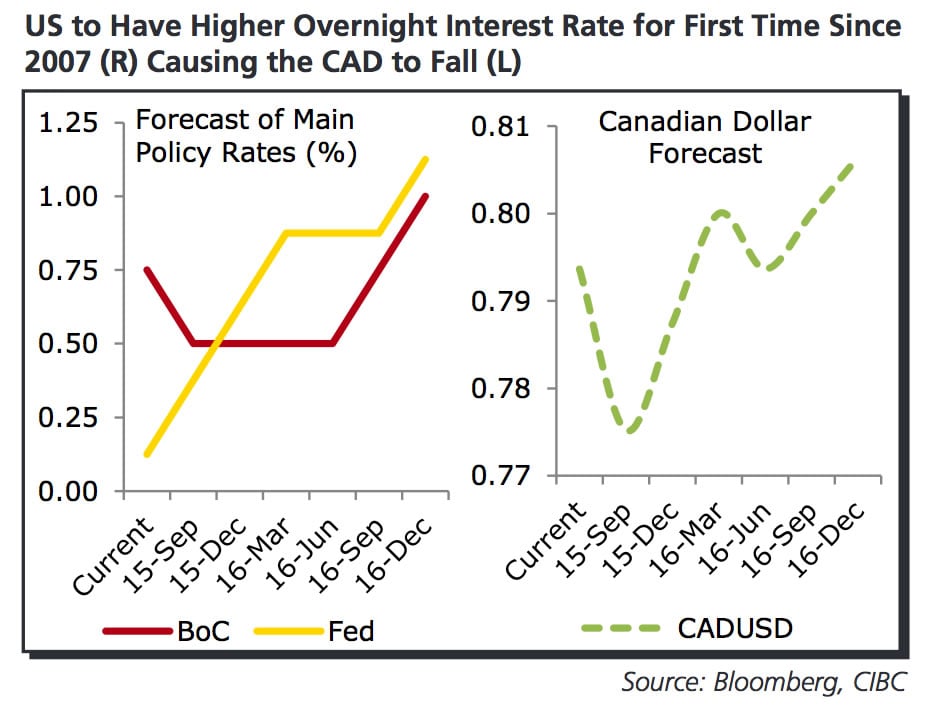Canadian Dollar Forecast: Recession Jitters Emerge
- Written by: Gary Howes
Canadian interest rates could be heading lower in coming months in response to weak economic data and this will likely pressure the Canadian dollar exchange rate complex lower.
How close is Canada to a recession? The answer has to be very close - the economy has shrunk every month of 2015 to date.
The GDP report for April showed the economy shrank by 0.1 per cent confirming momentum is towards the downside.
“Running the numbers and you’ll see we need a combination of 0.2% and 0.3% monthly advances for May and June in order to reach the safety of zero growth for the quarter,” says Analyst Benjamin Tal at CIBC.
With recession knocking on the door it should not come as a complete surprise that the outlook for the Canadian dollar is less than stellar.
Key to the outlook will be the reaction by the Bank of Canada - will it cut Canadian interest rates again? This is important because the central driver for currency rates at present remains central bank policy and lower interest rates = lower exchange rates.
The market is now attaching a 50% probability of another cut on July 15th when the policy making body at the Bank meets and delivers their next decision.
Bank of America Merrill Lynch’s Emanuella Enenajor says she is now forecasting the BoC to cut rates as early as July.
Royce Mendes, currency analyst at CIBC, is also turning more dovish:
“In the wake of the unexpectedly weak Canadian GDP print for April, we lowered our forecast for the BoC’s target rate. This makes the contrast in monetary policies between Canada and the US all the more clear.”

The implications of the above movements in interest rates in the US and Canada has seen CIBC lower their currency forecast profile:
“Given our expectation that the Fed will raise interest rates twice this year, we expect the overnight interest rate south of the border to be higher than Canada’s by the end of this year.
“This would mark the first time in more than seven years that the Fed’s policy rate has been above the BoC’s.
“The divergence in both monetary policies and economic growth should cause the CAD to depreciate against the USD hitting a low of about 0.775 (1.29) around Q3 of this year.”
Canadian Dollar’s Week Ahead: What We Will Be Watching
In Canada, all eyes will be on the June Labour Force Survey due out on Friday.
Employment rebounded sharply in May (+59K) after falling off the month before.
“After an outsized gain of the sort, it would not be surprising if the labour market took a breather in June and registers a 10K decline. In our opinion, this year’s average job creation rate of 21K, which is more than double the 10K posted in 2013 and 2014, will moderate over the coming months,” says a note from NBF Economic and Strategy.
Markets will also get an idea of how the real estate sector is doing with the release of data on May building permits and June housing starts.
Where housing starts are concerned, NBF Economics and Strategy believe they will revert to a pace more in line with the household formation rate of 184K after reaching 202K in May.
Declines are to be expected in particular for collective dwellings in Toronto, which attained a level of activity unequaled since 2012.
The merchandise trade balance for May might have improved somewhat thanks to higher energy prices and firmer U.S. demand.





